Adam Yamey's Blog: YAMEY, page 234
June 23, 2015
Most children don't ask ...

In general, children look forwards, not backwards: to the future, not the past.
This is a good thing generally speaking. An exception to this is based on the fact that one’s parents and other elders in the family are younger when you are younger. Often their memories are better when they are in their prime than when they have aged.
At a school reunion, the current headmaster at my old school, Highgate in North London, once addressed a group of us ‘old boys, who were in our 50s. One of the things he said, and it is the only one that I remember, was that we who were assembled to listen to him had reached the age when the ‘nostalgia gene’ kicks in.
Some of us who have reached the age where this gene begins to express itself have already lost older close family members, or those who remain, are beginning to lose their memories. My mother died over 30 years ago, but fortunately for me a number of my uncles and aunts, as well as my father, have thrived without loss of memory. So, when my ‘nostalgia gene’ kicked in, in my 50s, and I became interested in knowing more about the past of my family, they were able to help me gather information. This allowed me to realise in which directions to further direct my researches.
If only I could turn back the clock and speak to my mother or my grandmother or my father’s step-father, whom I knew until I was in my teens, how much more I would have learnt. But, being young, I was looking forwards rather than backwards. And, several unrepeatable opportunities were lost.My advice to anyone, who wants to learn about their family’s past, is to start young. If a relative says something that recalls the past, jot it down – you never know when you will become seriously interested, and will then value what you have noted.
I decided to set down a summary of what I had researched over the years so that if those who follow me ask about my family’s history when I can no longer recall it, it will be set down in writing. I decided that rather than confine myself to my own family’s history, some of which was based on what my elders have told me, I would try to write something that covered this, but with a more general appeal.
The result is my latest book “Exodus To Africa”, which I hope will interest people who like me have a Jewish South African heritage. Naturally, I hope that this book will also appeal to a more general audience.
Click HERE for PAPERBACK
Click HERE for KINDLE
Published on June 23, 2015 00:08
June 13, 2015
THEY WENT TO SOUTH AFRICA
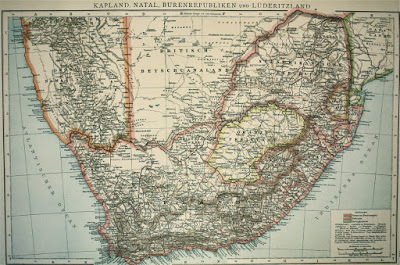
EXODUS TO AFRICA
By Adam Yamey
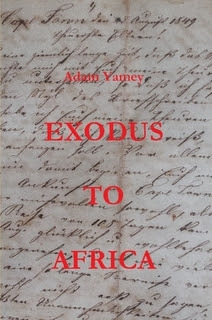
This is to tell potential readers what my latest book Exodus to Africa is all about.
Prior to the British taking over the Cape Peninsula in about 1800, Jews were not permitted to live there by the Dutch East India Company that had been governing the region for several centuries. Some Jews, who converted to Christianity, did set foot in what is now ‘South Africa’, but unconverted Jews did not. The arrival of the first openly practising Jewish settlers followed close on the heels of the commencement of British rule.
At first, there was a small trickle of Jewish settlers, almost all of them from Great Britain and the German states. A few arrived from St Helena. With the arrival of the Mosenthal brothers from Kassel, the flow began to increase. The Mosenthals and their Jewish associates began setting up a chain of trading stores, which effectively began to make the remote interior of the Cape Colony begin to prosper. All of this activity began before diamonds (in about 1868) and gold (in about 1880) put South Africa (i.e. the territories that united after 1910) amongst the economically significant countries in the world. Before the discovery of these precious commodities and the opening of the Suez Canal, The Cape was little more than a place, like the tiny island of St Helena, where ships stopped to pick up water and supplies whilst they travelled between Europe and Asia. It was not a place that attracted many immigrants, Jewish or otherwise, from Europe. The USA was the most favoured destination for those seeking a better life. The diamond and gold ‘industries’ that began in the latter half of the 19th century changed this. South Africa became attractive to immigrants including the Jews. The trickle of Jews from Europe to South Africa began to become an exodus (especially from Tsarist Lithuania). At the beginning of the 19th century, there were a handful of Jews in southern Africa. By the 1930s, as many as one in twenty ‘white’ people was Jewish.
My book, Exodus to Africa, takes a fresh look at the reasons Jews chose to travel to South Africa; how they got there; what they did when they arrived; what they and their descendants did to affect the history of the country; how they helped to oppose racial inequality (apartheid and its antecedents).
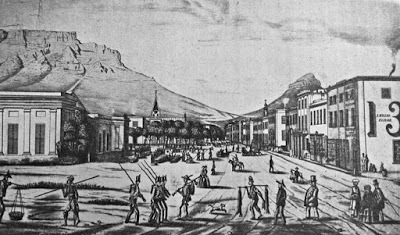
The first of my relatives to arrive in South Africa was Heinrich Bergmann from Bavaria. He disembarked at Cape Town in 1849. The last of them, my father’s cousin Hendrik Jami, who arrived 100 years later. Between these two dates, many members of both of my parents’ families migrated from Europe to South Africa. Their diverse experiences cover many aspects of Jewish life in the country. Using many of their stories to illustrate these, I have attempted to produce a history of the Jews in the south of Africa. The stories are told against the ever changing historical background of the troubled country where they chose to settle. My book is based on a multitude of sources, both previously unpublished primary material (documentary and from interviews) and also published secondary documentation.

Here are a few of the ‘protagonists’, whose tales are unfolded in my book:Heinrich Bergmann (1830-1866), an early settler typical of the Jewish man who joined the Mosenthal Brothers. His life took a surprising turn.
Jakob Seligmann (1846-1906), from Bavaria, was a ‘founding father’ of a small town in the Orange Free State. He fell afoul of the law and fled from Africa.
Sigmund Seligmann (1856-1939), also from Bavaria, started as an employee in the Cape Colony, and then began his own successful trading business before retiring to Germany in the late 1890s.
Franz Joseph Ginsberg (1862-1936), from a part of Prussia that is now Poland, began life in South Africa as a photographer. Soon, he became an industrialist, and then first an influential local politician, and later a national one. In 1927, he was elected a Senator in the Parliament of united South Africa.
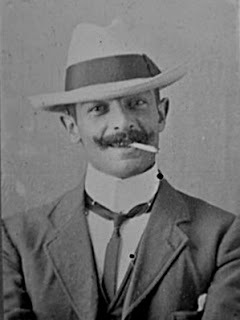
Gustav Ginsberg (1872-1922), Franz’s brother, a dentist, who suffered from the effects of the vagaries of first the 2nd Boer War and then later the First World War. His sons became well-known in the arts, both in South Africa and the USA.
Iwan Bloch (1886-1931), from Baden-Württemberg, who began working as a shop assistant in Zurich, and ended up the Mayor of a town in South Africa.
Joseph Halperin (1870- c. 1949) sailed to South Africa with his wife and three children. Ran a bakery and then a dairy in Cape Town before retiring to enjoy the successes of his children who had advanced up the ‘social ladder’.
Solomon Yamey (1883-1931) left his shtetl in Tsarist Lithuania and became a wandering pedlar (‘smous’) in the Cape before owning his own successful store in an Afrikaans speaking town near Cape Town.
By the time that John Katzin (1866-1931), who was born in Tsarist Lithuania, arrived in South Africa he had already lived in Amsterdam and London. In South Africa, he made a fortune in the laundry business. Some of his children became noted in wider world of public work and literature.
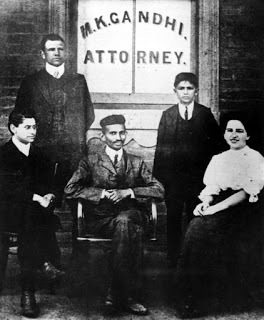
Henry Polak (1882-1959), [seated left in the picture above] a lawyer with London, became one of MK (later the ‘Mahatma’) Gandhi’s close associates in South Africa.
David Kitson (1919-2010) was one of the brave people with Jewish roots who actively supported the struggle against apartheid. His cousins the Budlenders, of Lithuanian and Polish Jewish extraction, risked arrest and worse because of their brave stand against the iniquities of racial oppression in South Africa.
There is no doubt that though a small proportion of the European population of South Africa, the
Jewish people played a disproportionately large role in the development and history of its country
from 1800 onwards. Freed from the repression and hostility that they faced in the countries where
they were born, they flourished in a country that was no stranger to oppression. Exodus to Africa explores all of this and much more.
Exodus to Africa is NOW available on KINDLE:
CLICK HERE to buy A COPY
PS: you don't need to own a Kindle reader; you can downloaed a free reader for your PC, laptop, tablet, or 'phone from www.amazon.com (Click HERE)
By the 27th JUNE 2015, you will be able to buy a
PAPERBACK edition by clicking HERE
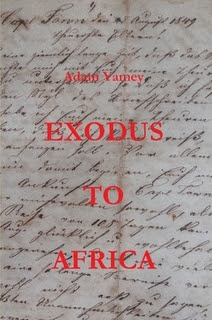
Published on June 13, 2015 05:02
May 28, 2015
PAINTING ALBANIA
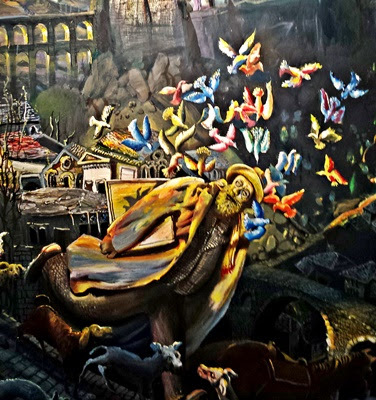
In an era before photography became the principal mode of recording memorable scenes by travellers, the English poet and artist Edward Lear (1812-1888) toured Albania during 1848. His sketches and paintings combine realism with romanticism. They provide the viewer with a good sense of what he actually saw and felt. Many years ago in the 1970s, having recently seen one of Lear’s paintings of the Vale of Tempe (now in Greece), I attempted to follow in his footsteps to see where he had sketched. What I found was much as he had depicted the place many years earlier.
Conditions in Albania for a traveller in 1848 were far from comfortable as Lear described in his Journals of a landscape painter in Albania, etc, published in 1851 in London. Occasionally, he was attacked by dogs, and more often by the locals who were suspicious and also disapproving of his attempts to depict reality. For example, about Elbasan he wrote: “Dervishes — in whom, with their green turbans, Elbassan is rich — soon came up, and yelled, " Shaitan scroo ! — Shaitan !" in my ears with all his force ; seizing my book also, with an awful frown, shutting it, and pointing to the sky, as intimating that heaven would not allow such impiety. It was in vain after this to attempt more; the " Shaitan" cry was raised in one wild chorus — and I took the consequences of having laid by my fez for comfort's sake — in the shape of a horrible shower of stones, which pursued me to the covered streets, where, finding Bekir with his whip, I went to work again more successfully about the walls of the old city. Knots of the Elbassaniotes nevertheless gathered about Bekir, and pointed with angry gestures to me and my ' scroo.' “We will not be written down," said they. " The Frank is a Russian, and he is sent by the Sultan to write us all down before he sells us to the Russian …
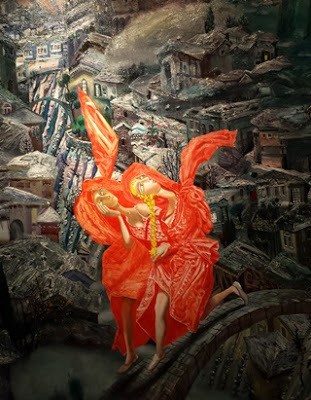
The opening began with three speeches. One was given by Head of Representation of the European Commission in the UK, Jackie Minor. This was followed by an introductory talk by the Ambassador of Albania Mal Berisha. Then, the artist addressed the gathering also in English. The paintings on display were his homage to Edward Lear, and a very fine one at that. I am no art historian or critic, but I felt that like Lear, Bashkim Izano managed to combine romantic fantasy with realism. Several of his canvases had symbolic figures painted in sharp contrast to the evocative impressionistic Albanian land- and townscapes that formed the colourful backgrounds. One of the images that I particularly liked was an almost comical depiction of an artist running downhill with a painting under his arm whilst dogs bark at his feet. This image that reminded me of the paintings of Marc Chagall must surely be Izano’s representation of poor old Lear who faced situations such as this.
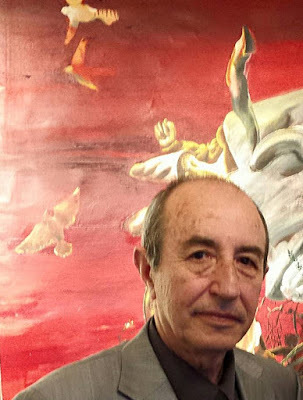
I was fortunate to have had a nice conversation with Mr Izano, whose English is superb after having lived in the USA for a good number of years. I asked him whether he knew the author Ismail Kadare, who was born in in Gjinokastër. He said that he knew him well and that like me his favourite Kadare novel is Broken April. He also told me that he had painted Kadare’s portrait a number of times. I would have loved to have seen at least one of these, but the exhibition was a homage to Lear.
The exhibition is on until 19th June 2015
Now visit Adam Yamey's website:
http://www.adamyamey.com
Published on May 28, 2015 14:59
May 24, 2015
EINSTEIN IN ALBANIA ?
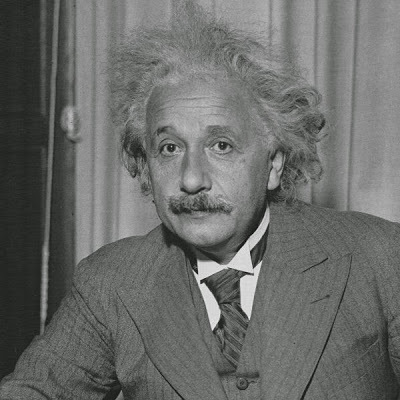
Src: http://th.physik.uni-frankfurt.de/~jr...
After watching the movie Besa, The Promise, my curiosity drove me to watch another film about the rescue of the Jews by Albanians before and during WW2. The film Rescue in Albania, may be watched at your leisure on the Internet (https://youtu.be/eZ8szhccfZM). During the first 12 minutes of this film, it is stated that the physicist Dr Albert Einstein was both issued with an Albanian visa or passport and also spent several days in Albania on his way to the USA in 1935. This aroused my curiosity.
There are numerous references to Einstein’s alleged stay in Albania on the Internet. However, if this happened it is not mentioned in any of at least three well-regarded biographies of this manI searched the Einstein Archives OnlineUnfortunately, I have not been able to see the contents of the two letters described above. The letters were written in 1931, a time during which Einstein was shuttling back and forth between Europe and the USA, and before Hitler became the Chancellor of Germany. Einstein finally left Germany in 1933.
One of the items that I found whilst investigating Einstein’s visit to Albania throws some doubt on it. On the 21st of May 2013, Ms. Edith Harxhi, Deputy Foreign Minister of the Republic of Albania, is reportedI will leave you with this, and let you decide for yourself whether Einstein ever set foot in Albania or possessed an Albanian passport. I am rather sceptical, but IF ANYONE CAN PROVIDE ME with good evidence that Dr Albert Einstein did actually visit Albania, I am willing to change my mind!
Now visit Adam Yamey's website:
Click HERE!
Published on May 24, 2015 13:36
May 19, 2015
An Albanian Eagle in London
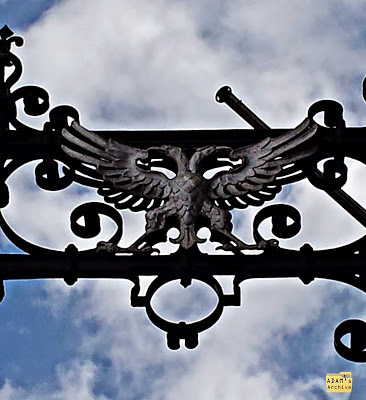
The double-headed eagle, national symbol of AlbaniaRecently, I was walking along London’s Fleet Street when I happened to notice a building with a double-headed eagle above its main entrance. This building houses the private bank C Hoare and Co. The bank, founded in 1672, has had premises on this site since 1690, when its founder Richard Hoare moved his business there from “The Sign of The Golden Bottle” on Cheapside
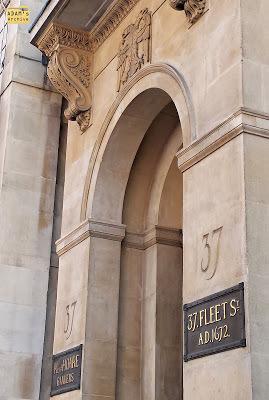
The founder of the Hoare (or Hore) family was Robertus who, in about 1330, married an heiress of the family of Fforde of Chagford in the county of Devon I wonder why the curious heraldic device of the double-headed eagle was adopted by this family. From what I have already written, it is evident that the family was employing it in the 12th century, certainly by 1169. This was before 1256 when Richard, Earl of Cornwall, was elected to become King of the Holy Roman Empire, one of whose most well-known emblems is the double-headed eagle. So, it is unlikely that the family picked up the double-headed eagle from that source.
The eagle with two heads was certainly used by the Byzantine Empire and also the Seljuk Turks. It has been claimed by some that people returning from the Crusades, which began in the late 11th century, may have brought this symbol to Western Europe. However, there is evidence that it reached this part of the world even earlier. Emile Male wrote that there is a cloth dating back to the 9th or 10thcentury AD at Sens in FranceWhen I told the porter of the Hoare Bank in Fleet Street about my interest in double-headed eagles, he told me that he had often wondered about the curious eagle above the door where he stands all day. His view was that the Hoare family chose to use the double-headed eagle sometime after the bank was founded simply because nobody else was using this heraldic symbol
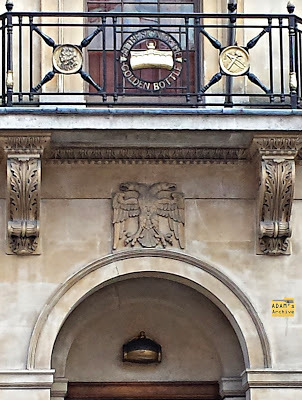
Explore Adam Yamey's writing by visiting:
http://www.adamyamey.com
Published on May 19, 2015 08:55
March 26, 2015
An Albanian in CochinFort Cochin ('Kochi' in ...
An Albanian in Cochin

Fort Cochin ('Kochi' in Malayalam) lies near the mouth of a saline lagoon on the Malabar Coast in Kerala on the western side of India. Every 2 years it hosts the Kochi-Muziris Biennale. The brainchild of the artist Bose Krishnamachari, this exhibition of art by leading Indian and international contemporary artists makes use of the fabulous interiors of Kochi's magnificent heritage buildings to display the exhibits. The largest venue, which contains the majority of the works is Aspinwall House, the former headquarters of a British trading firm.
This year (2014) the artists include, in addition to leading Indian artists, such well-known names as: Anish Kapoor, Mona Hatoum, Yoko Ono, and William Kentridge. Amongst the best works on show is a video by the Albanian born artist Adrian PACI.
Paci was born in the Albanian city of Shkoder (Scutari) in 1969. He studied in Tirana along with the artist Edi Rama, who is currently Albania's prime minister. In the 1990s, Paci moved to Italy. He now lives and works in Milan. He was aged 22 when Albania's hard-line, isolationist, Stalinist regime suddenly crumbled in the very early 1990s. Therefore, he lived throughout his childhood and early adulthood under the repressive conditions imposed firts by Albania's dictator Enver Hoxha, and then by his successor Ramiz Alia. I felt that the influence of his experiences of those times are to some extent expressed in his video The Column.
Paci's video lasts about 25 minutes. It begins in a marble quarry in China. A large piece of marble is being hewn carefully from the bed-rock. The ne4xt scene begins with shots of cranes at a dock side. The rectanguloid piece of marble form the quarry is carefully lowered into the hold of a long ocean-going freighter vessel. This boat sets off for Europe from China. Throughout the voyage, a small team of Chinese sculptors meticulously transform the lump of stone into a classical column with an elaborately decorative capital. Paci's film captures details of this process: the actual carving as well as the expressions on the sculptors' faces. The sculptors' teamwork and dedication to the task is well portrayed. In addition, Paci focusses on details of the ship, the sea, and the men's activities such as cooking, relaxing, and smoking. For example, Paci shows us a sculptor popping a piece of gum into his mouth whilst smoking a squashed cigarette. In anothe short sequence, we see a man chopping cabbage in prepariation for a meal. This is inserted between scenes showing the men cutting the marble. Features such as these in addition to shots of the battered ship's hull and water rushing past the ship's exterior heighten the excitement of this visually intriguing film. Paci captures the textures of human activity and also of inanimate objects both beautifully and most sensitively. This film is far more than a documentary; it is a moving work of art. There is no soundtrack apart from the actual sounds of the men working and their surroundings.

Eventually, the column is finished. The hold of the freighter, which has up to now been open to the sky, is closed with slatted metal shutters. The final scene of the film shows lines of light that have filtered through gaps and holes in the shutters moving slowly along the the somewhat 'kitschy' but perfectly made column and its capital.
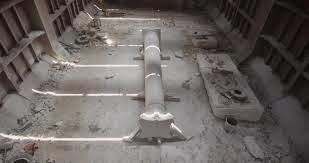
Paci's film , which I considered to be little short of perfect, made me reflect on its possible relationships with his native land Albania.
The film, The Column, is interesting as a work of art not only because it is in itself a brilliant creation but also because it follows the creation of a work of art, the column and its capital. The film portrays a heroic struggle between man (the sculptors) and nature (the stone block). Such heroic struggles bring to my mind the image that the former Stalist Communist regime of Albania used to enjoy portraying: little Albania, like David, versus the rest of the world, Goliath.
Paci would have been a small child when Albania broke with its ally the Peoples' Republic of China in the early 1970s. While I watched his film, I was impressed by the intense concentration and single-mindedness of the Chines sculptors. I was reminded of Ismail Kadare's novel The Concert in which the story of Albania's fracture with China unfolds. I wondered whether Paci would have herad about the unusual single-mindedness of the Chines who had helped to develop his native land. Did this, by any chance, affect his portrayal of the Chines sculptors?
The project itself - the carving of a rather ridiculous column at sea - amused me. I realise that it must have been a commission and could see the practicality of carving the stone while it was in transit, but nevertheless it intrigued me. Surrounded by the empty ocean without anything but the empty horizon to be seen, the monolithic project being executed by heroic and intensely serious workers represente, for me atleast, a metaphor of the Albania of Enver Hoxha - the metaphor of a self-sufficient state attempting live and function in complete isolation from the rest of the world.
I am very pleased that I had the chance to view Paci's visually engrossing and entirely fascinating work several times over and in such a pleasant environment as is afforded by the Kochi-Muziris Biennale, which will be reincarnated next in December 2016.

Now visit Adam YAMEY's
website:
http://www.adamyamey.com
Published on March 26, 2015 23:50
January 27, 2015
The LEGACY of Rubens

I am so disappointed that I feel compelled to set pen to paper, or, should I 'say', put fingers to keyboard. I have just returned from an exhibition, called Rubens and his legacy, at London's Royal Academy.
I am not a great fan of the Flemmish painter Peter Paul Rubens, but I enjoy his work sufficiently to have put my head into the Royal Academy, an institution that I do not particularly care for. It is, in my opinion, often filled with people, some of who feel that visiting the Royal Academy somehow adds 'respectability' to their cultural self-perception.
The name 'Rubens' in the exhibition's title is given a far bigger font size than the words that follow it, namely, 'and his legacy'. When I entered the exhibition, one of the first pictures that I remarked on was an evening landscape. I said to my wife: "That looks Turner-esque..."; and indeed it was a painting, not by Rubens, but by Turner who is apparently to be included within Rubens's 'legacy'. And, this helps illustrate my problem with this exhibition. The works by Rubens are, like orange squash, heavily diluted with works of art that the show's curators feel - and I emphasise 'feel' - are the great artist's 'legacy'.
I have to admit that the title of the exhibition led me to believe that what I was going to see was a number of Ruben's excellent canvases that portray soft-porn or eroticism in such a way that even the visually-impaired can enjoy it. I would have been happy if a few of the exhibits illustrated Ruben's legacy, but I was not. Rubens's works were hard to spot in the sea of pictures by other artists including Van Dyck, Constable, Turner, and an obscure porcelain decorator from the Chinese Qing dynasty. The works of art that fill the vast areas of wall space between the works by Rubens, which I was hoping to see, were undoubtedly of exceptionally high quality. However, had I wanted to see a pot-pourri of fine art, tastefully chosen, I could have done so without becoming a Friend of the Royal Academy or queing up for an expensive ticket by visiting the National Gallery or the Wallace Collection or a private art gallery in the streets near to the Royal Academy.
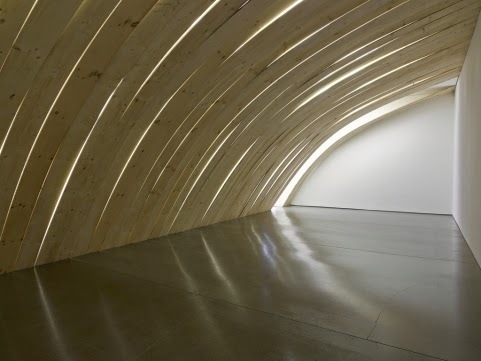
On leaving the Rubens exhibition, which I feel would be better named The LEGACY of Rubens, we dropped into the White Cube Gallery in Masons Yard. The exhibition being shown there contains five wooden sculptural works, simple in construction but otherwise awe-inspiring, by Virginia Overton. Although not Rubens, her curious bits of woodwork are exciting and novel. This tiny exhibition was, I felt, somehow more honest and life-enhancing than what I had just seen at the staid Royal Academy.
To be fair to the Royal Academy, they have held some excellent shows including a brilliant one about the Bauhaus held in the late 1960s, and, more recently, a wonderful collection of artworks by Anselm Kiefer.
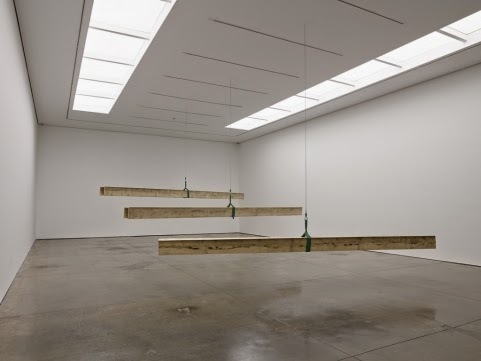
Read about writing by
Adam Yamey
on his web-site:
http://www.adamyamey.com
Published on January 27, 2015 07:48
November 23, 2014
COCHIN WITHOUT THE BACKWATERS

Many of our acquaintances expressed some surprise when we told them that we were going to spend 12 days in Fort Cochin ('Cochin'). They thought that we would get bored, and suggested that we left the place for a few days to see the Backwaters or some of the Keralan nature reserves. We did spend 12 days in Cochin, but did not follow our friends' advice. We discovered, as I hope to show, that there is plenty to see in Cochin and that, maybe, 12 days is not long enough.

The climate in Cochin is hot and extremely humid. Therefore, it is best to take things at a leisurely pace; try to 'chill-out' (if that is possible in such a hot climate) rather than rush. Try to spend a lot of time eating and drinking - Cochin is full of lovely places to refresh body and mind (see my article about eating in Cochin by clicking HERE )

The place to which we kept returning at least once every day was the stretch of beach where the Chinese Fishing Nets operate. These nets were introduced to Kerala either by the Chinese explorer Zheng He (1371-1433) or by Portuguese settlers from Macau. A net stretched between 4 connected rods forms the base of a pyramidical structure. This is attached to a long lever which carries stone counterweights at its landward end. Periodically, the net is lowered beneath the water and left there for a while. Then a number of men, assisted by the counterweights, raise the laden net fom the water.

The contents of the nets consist mainly of the weeds that float on the water, and are emptied into crates. One of the fisherman sifts through the weeds looking for seafood (see below). Small, immature fish are chucked back into the sea, and anything that can be sold is sorted into containers.


One needs to visit the nets often to be lucky enough to see a net 'in action'. A path runs alongside the nets. Fisherman offer the passersby fresh fish, which they suggest you buy to take to nearby restaurants to cook. Other people try to sell a wide variety of products, mostly of little use! If all this activity is too much for you, there are more 'Chinese' nets to be seen across the waters on nearby Vypen Island.

The ferry stations for Vypen are close to the Fort Cochin Bus Stand. You can use the foot passenger ferry (see above), which has a special 'ladies only, section at its stern, or the vehicle carrying ferry on which men, women, autorickshaws, two-wheelers, cars, and trucks, mingle freely. The nets at Vypen stand facing those across the waters in Cochin, but without any crowds near them.

Vypen has a beautiful church that dates back to the Portuguese invasion of Kerala (see below).

An autorickshaw or bus from the Vypen landing stage will transport the visitor over a bridge across a stretch of water to Vallarpadam Island, where the twin-towered Basilica of Our Lady of Ransom (see next 2 pictures below) stands in splendid isolation and attracts many pilgrims.


Returning to Cochin from which we hardly ever strayed, let us now look at some of Cochin's churches. Not far from the Chinese nets and almost opposite the grounds of the Fort Cochin Club - a fine example of British colonial architecture, which can be viewed by non-members through its gates, is St Francis Church. Now a Protestant church, it was once Roman Catholic. It was built by the Portuguese. The altar which they installed (see below) is now housed in the fascinating Indo-Portuguese Museum (very well worth a visit) in the compound of the Bishop's Palace on Elphinstone Road.
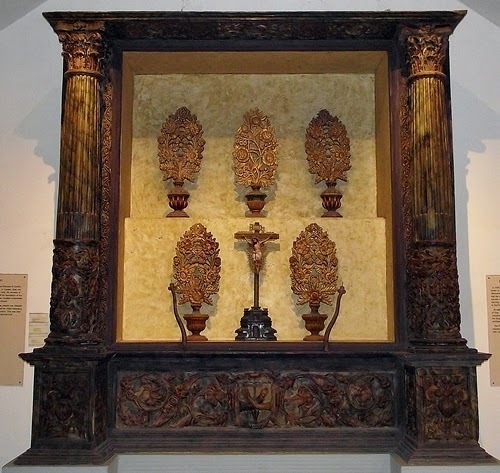
Today, that altar has been replaced by a newer one. The general appearance of the church's interior is rather dull except for the hand-operated punkahs (ie. ventilators, see below)that are suspended above the pews.


Look out for the gravestone marking the resting place of Vasco da Gama who died in Cochin. His body was later taken to Lisbon in Portugal. The walls of the church and especially the estern end of it are lined with Dutch (see below) and Portuguese gravestones.

Near to St Francis is the marvellously stocked Idiom bookshop. This is a booklover's paradise, but do not expect any bargains!

The Basilica of Santa Cruz (see above), now a Roman Catholic Church, stands further away from the coast than St Francis. Its interior (see below) is nothing special but worth visiting briefly. For those who like attending masses, they are available in Malayalam, English, and also Latin.

However, the church is located close to a truly wonderful Italian restaurant called Upstairs.

St Peter and Paul is a less visited church, but most interesting. Located in Tower Road, it serves an Orthodox Syrian congregation. It is said that the Syrian Orthodox Christians in India began worshipping in the Orthodox rite following their conversion by St Thomas in 52 ad. Whatever their origins, these Christians worship according to rites that resemble those practised by Orthodox Christians in the Balkans and elsewhere in Eastern Europe. Over the centuries, the Syrian Christians in India have become divided into numerous different sects. Those that worship at this particular church in Tower Road look to a spritual leader not in Syria but somewhere in Kerala.

The high altar of the church is hidden not by an iconostasis, as in Orthodox churches in Europe, but by a curtain rather like that found in a theatre. The picture above shows this as found in St Mary's Orthodox Cathedral in Ernakulam. The church in Tower Road in Fort Cochin contains an interesting carved tablet (see below).

It is carved, so we were informed, in Syriac (a dialect of Middle Aramaic) script. The bible (see below) used in this church is bilingual - Malayalam and Syriac. I hope to write much more about this fascinating church in a future article.

Another church well worth visiting is St Lawrence at Edacochi, which can easily reached on a local bus (see below) that starts at Fort Cochin bus stand.

This attractive Roman Catholic church was established by the Portuguese in the 16th century. Close to the weed covered waterway, this church has a lovely white-painted facade and a bell tower with 'arabesque' features.

When we visited it, a christening was in its final stages (see below). The congregation were very friendly and some of them spoke with us afterwards.

Regular buses connect Edacochi with Mattancherry, but the latter can only be reached by autorickshaw from Fort Cochin. For many centuries, Mattancherry had a thriving Jewish community. Now, only a handful of very elderly Jews live there. We met one of them - an old lady called Sara Cohen, who supervises the running of a shop (see below) selling woven material of Jewish interest (kippot etc.) There are not enough male Jews in the Cochin area to be able to hold services in the beautiful synagogue, which has now become a protected national monument.

The synagogue is well worth a visit.It has a beautiful floor covered by hand-painted Dutch tiles, each one a different design. The central bima made with brass is spectacular as are the many lamps that hang from the ceiling.

Many tourists swarm through the ancient synagogue, but it is worth sitting down and passing a few minutes inside. In between the bursts of visitors, it is a very peaceful place to linger. The synagogue is close to Jew Street, which ought to be renamed 'Kashmiri Street' as many of the shops lining this picturesque thoroughfare are now owned and run by people from Kashmir.


The Synagogue is right next to the Mattancherry (Dutch) Palace (see below). This contains some interesting frecoes, but these and the other exhibits are difficult to see because of the crowds of visitors streaming through the place. Give it a miss if you are pressed for time!

Halfway between Mattancherry and Fort Cochin, there is a delightful church with a Portuguese facade to be visited.

Its peaceful interior is quite decorative (see below)

Back in Fort Cochin, there are many more attractions. A small arch on Tower Road (near to the Tourist Police office) admits one to the old prison which is now open as a visitors' attraction.

On entering the jail's compound, you get to see a row of empty cells, whose doors open out onto a covered walkway. A number of photographs (see below for an example) commemmorate heroes of India's long struggle to become independent of the British.

Some distance away from the jail, and well beyond the vast grassy Parade Ground which is surrounded by a number of grand buildings dating back to Portuguese and Dutch times, there is the Dutch Cemetery. This was closed when we visited it, but the gates permit a good view of its well-spaced funereal monuments.

Even further away from the centre of Fort Cochin lies the Maritime Museum. Situated on Indian Navy Land, this place is a bit disappointing at first sight. But, do not be put off by first appearances! The grounds of this museum are filled with guns, weaponry, and other military hardware (see below). This is of limited interest in my opinion.

You should give the outdoor naval 'armamentarium' a cursory glance before entering the massive 'bunker' that contains the most interesting part of the museum. This pleasantly cool bunker cxontains a number of extremely fascinating exhibits relating to India's many century-long history of military warfare. One part of this that attracted my eye was an exhibit about the tracking of a Pakistani submarine that plied between West Pakistan and what is now Bangladesh (formerly 'East Pakistan') during the 1971 Bangladesh War.
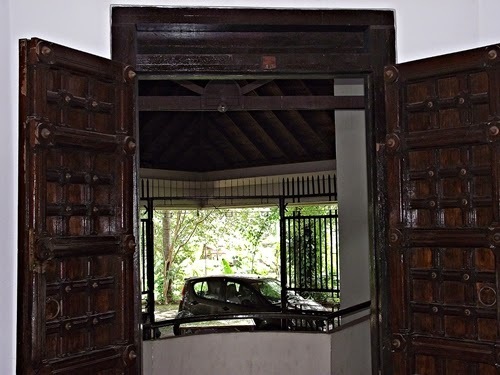
There is another museum that must be visited. This is the Indo-Portuguese Museum, to which I have already briefly alluded. This is housed in the grounds of the Bishop's Palace (which is not open to the public). It has been handsomely endowed by the Gulbenkian Foundation and contains a good selection of exhibits dating back to the period during which Cochin was a Portuguese 'possession'. The pair of doors illustrated above make a fine entry to the exhibition space. The door lock, illustrated below, is one of many fascinating exhibits.

It contains within its complex designs the following religious symbols: a Hindu trident, an Islamic Crescent, a Christian cross, and Jewish candles. It summarises Kerala's religious diversity. Another curious exhibit is a statuette of St George and the Dragon (see below). St George in this depiction looks remarkably like Indian representations of Lord Krishna.

While the Indo-Portuguese Museum is a contemporary structure housing 'heritage' items, David Hall, which faces the Parade Ground, is a 'heritage' structure that houses contemporary objects.

Its external appearance (see above) reminded me of Dutch constructions that I saw when visiting the Cape Province in South Africa (see an example below).
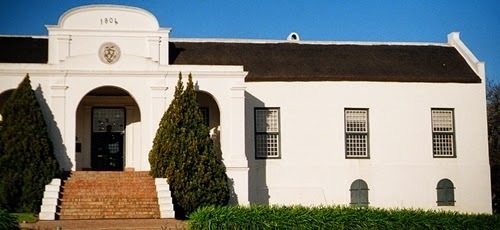
David Hall is a Dutch construction. It contains a number of room used to house contemporary artworks: paintings and sculptures. The largest of these is used occasionally as a performance space. We were fortunate to have been able to attend a concert given by a jazz ensemble visiting from the Netherlands. The concert was so popular that some of the audience were forced to stand outside and peer through the windows (see below).

Fort Cochin is full of 'heritage' buildings, some of which date back several centuries to the times when the Portuguese and Dutch ran the area. By wandering slowly through the streets of Port Cochin, the visitor will gain plenty of views of these, some of which contain rooms that serve as accommodation for tourists and other visitors. One one of these buildings I spotted the sign of the Dutch East India Company (see below).

The road that connects the Fort Cochin Bus Stand with the Ernakulam ferry station, Calvathy Road, contains a number of so-called 'heritage' buildings of varying degrees of interest. The slightly dilapidated Aspinwall's building (see below) is used as one of the exhibition places during the Kochi-Muzhiri Biennale, which is next to be held from December 2014 until March 2015.

Aspinwall and Company Ltd has been involved with commercial activity along the Malabar Coast since 1867 when it was founded by an Englishman John Aspinwall. Almost opposite this building, there is a small shack in which I spotted a large portrait of Che Guevara (see below), This and the many hammer and sickle signs that can be seen all over Cochin remind us that many people in Kerala have socialist leanings.

Greenix, further along the road, was described to us as being 'unmissable'. It describes itself as a 'cultural art centre promoting Kerala's varied art forms under a single roof '. It might well live up to its claim but the unfriendly and unhelpful behaviour of the staff on duty when we visited it put us off exploring it. The Pepper House, which is across the road from Greenix makes a pleasant contrast. This old building contains a large, peaceful inner courtyard (see below), at one end of which there is a pleasant café.

The building, which is also used during the biennale, houses a privately owned magnificent library of art books and DVDs. The collection that is open daily for members of the public to use rivals many universitys' collections of books on contemporary (and older) art.

Back in town, not far from the Fort Cochin Bus Station, stands the luxurious Brunton Boatyard Hotel. Its website describes the building that houses as being a 'recreated period building ' , the period being the 19th century. It is worth wandering around its extensive lobby in order to view the fine coollection of portraits (see above) and old maps (see below) that line its walls.

I hope that by now you are, dear reader, beginning to understand how we were able to spend so long in Fort Cochin without having to make excursions to undoubtedly fascinating stretches of the Backwaters or to nature reserves. Spend lots of time in Cochin, relax and make your own discoveries!

Now enjoy more writing by
Adam Yamey
by clicking
H E R E
Published on November 23, 2014 07:33
November 16, 2014
EATING IN COCHIN

When we informed our friends in Bangalore that we were going to spend 12 days in Cochin (in the Indian State of Kerala), they all wondered what we would find to do there for such a long time. "Ah, well," some of them said, "you can always spend a few days on the backwaters or in a nature reserve. That would help the time pass nicely." Despite advice such as this, we managed to find plenty to do in and around Fort Cochin without having to leave it as our friends suggested.

One of the things that we particularly enjoyed in Cochin was eating. This small city is well provided with restaurants, many of which serve food - both Indian and European - of the highest quality. In 12 days, we had plenty of opportunities to sample the fare on offer in this delightful, laid-back historic town. I plan to make your mouth water by describing some of the many places that served us food. The opinions expressed in this article are entirely my own and completely unbiased by inducements offered by the establishments to be discussed.

There is a line of 4 restaurants along one pavement of Tower Road opposite the grounds of Delta College. They look rather like the beach-side 'tavernas' that I used to enjoy visting in Greece during the 1960s and 1970s. At any time of day or night, it is impossible to walk past them without being solicited by the people who work there. Even if you tell them that you have just eaten, they will encourage you to take your next meal there. I had never eaten at Maxim's in Paris, and thought it would be interesting to sample Little Maxim's, one of these pavement restaurants in Cochin. Sadly, it was one of the least enjoyable places that we patronised. There was nothing wrong with the food, but it lacked interest. The restaurant's prices were no less than other establishments that we visited, which had better food and more pleasant ambiences.

24 hours later, we ate dinner in one of the best places that we discovered in Fort Cochin. The Old Harbour House is located in a beautifully preserved building that was probably built by the Dutch several centuries ago. It has an internal courtyard (see above) and a lovely walled garden where meals can be eaten. Costing little more than Little Maxim's,this restaurant is blessed with a chef who learnt his craft in Italy. The seadood pasta (see below), which I ordered, was second to none, even some of the splendid pasta that we had sampled earlier in the year in Sicily. My wife had a superb Keralan fish curry. On our second visit to this restaurant we drank wine, but now this may no longer be possible as Kerala has just become a 'dry state' in which the serving of alcohol is severely restricted by law.
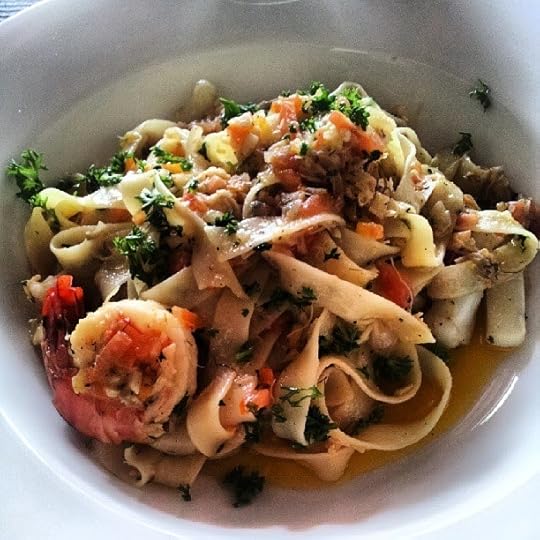
The Old Harbour House is not the only place that serves excellent pasta in Cochin. Located on the first floor of a building opposite the Santa Cruz Basilica, Upstairs is an Italian restaurant, Its owner was trained to cook in Genova in Italy, and the food that he serves shows much eveidence of this. Both the pastas that we tried and the one pizza were superb - well up to the standard of most good restaurants in Italy.
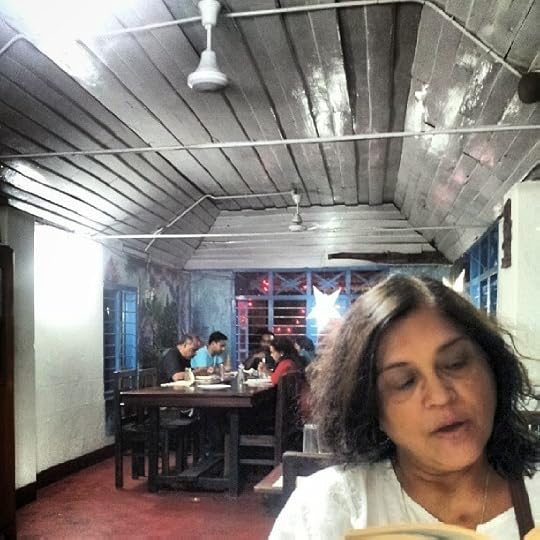
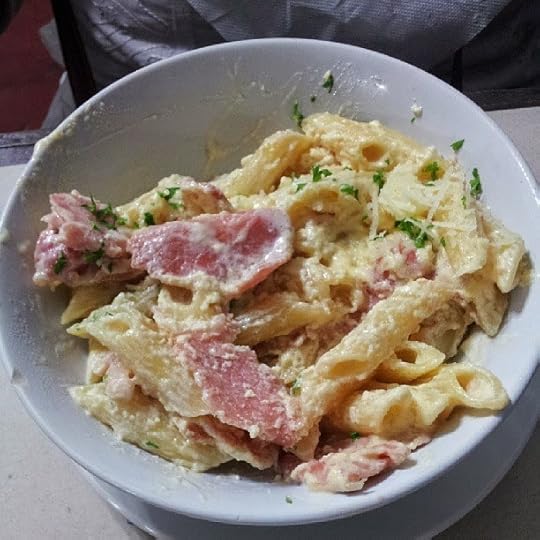
Upstairs calls itself a 'jazz café'. Diners are regaled by an endless stream of recorded jazz music, which is not unpleasant. An Italian who spends several months a year working in Cochin confirmed our opinion of the high quality of the Italian food served here, but his only criticism was that he did not think that they used extra-virgin olive oil! On one of our visits to Upstairs we shared a table with a young lady who reccommended that we tried the nearby Fusion Bay Restaurant. We did as she advised, but were disappointed. This pleasant looking restaurant is very popular, but we did not find that the food was as high a quality as many of the other places where we ate in Cochin. Equally, Talk of the Town, which is opposite Upstairs, was not worth revisiting.
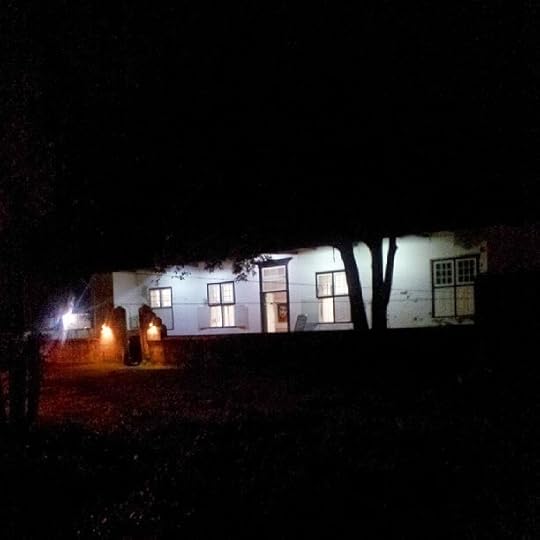
David Hall (see picture above) is a building built by the Dutch, and looks like many of the houses built by the Dutch settlers in the Cape of Good Hope (South Africa). Beautifully restored and preserved, this has become a cultural centre. Some of its rooms house works of contemporary art, and the largest of these is used occasionally as a venue for performances. We were lucky enough to attend a fine jazz concert there. Behind the building there is a garden. On one side of this there is an open air café covered by a canopy. This restaurant serves food and drinks. Its kitchen is provided with a pizza oven (see below). The pizzas that I tried there were not as good as that which I ate at Upstairs, but they were quite acceptable and better than many pizzas that I have eaten elsewhere in India.
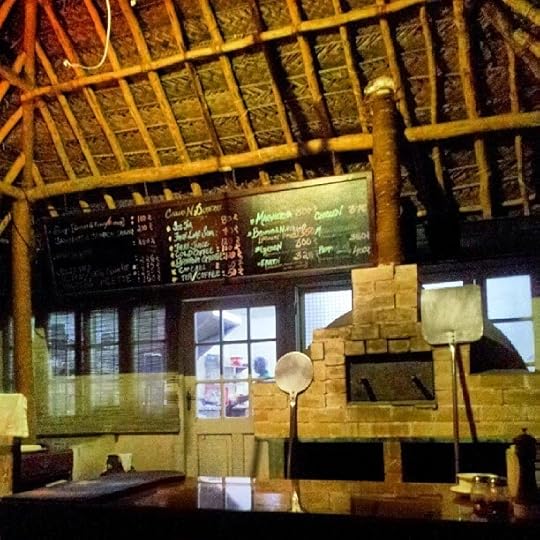
Other offerings from the menu at David Hall are best avoided. Whether or not you plan to eat at David Hall, it is a place that is well worth visiting in Cochin. David Hall is located at the side of Fort Cochin furthest from the bus stand and various ferry stations. Between the bus stand and the ferry landing stage where boats to Ernakulam may be boarded, there are a number of eateries of interest. The 'poshest' of these is Brunton Boatyard. The two places that we looked at here were the groundfloor bar-cum- restaurant, which is reached by walking along a passageway lined with fascinating old maps of Cochin (the one shown below was dated 1663), and another much fancier place upstairs called the 'History' restaurant.

The ground floor place has an outdoor garden overlooking the lagoon and with a view of distant cranes at the container terminal on Vallarpadam Island. Incidentally, it is surprising that the two most luxurious hotels in the area - the Brunton and the Taj Vivanta on Willingdon Island - have rather spoilt vistas rich in industrial objects. The filter coffee served in the ground floor café was pricey but excellent. Feeling peckish on one occasion I ordered a 'beer slider with bacon' (see below). This was beautifully presented but disappointingly prepared - poor in taste and not good value for money. The History Restaurant has an elaborately written menu, but offered little that could not be obtained elsewhere in Cochin at a fraction of the price. Each main dish cost more than a decent meal for 2 or 3 people elsewhere in the town.
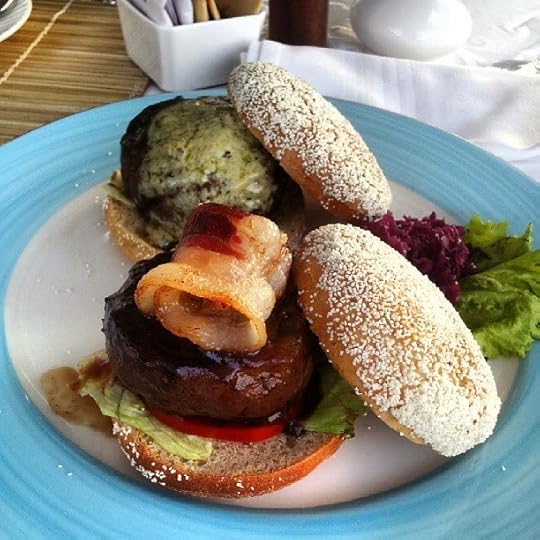
The Cochin Fort restaurant is directly across the road from the Brunton Boatyard. It is a lively, popular place set back from the busy main road. On arrival, we were invited to look at the freshly caught fish on display and if we had wanted we could have selected specimens that caught our eye. We ate a good meal during an exceptionally heavy rain storm.
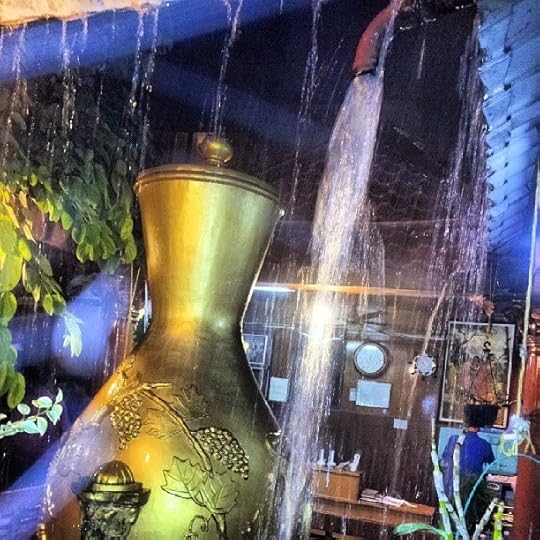
The fish peera, a dryish preparation of fish with cococonut, was delicately flavoured and delicious. The fish moilee was also excellent as were the prawns prepared in a north Indian way. The Aleppy fish curry was tasty but not as good as the other dishes that we ate. 'Continental' and Italian dishes were also on the menu but our hosts did not reccommend these.
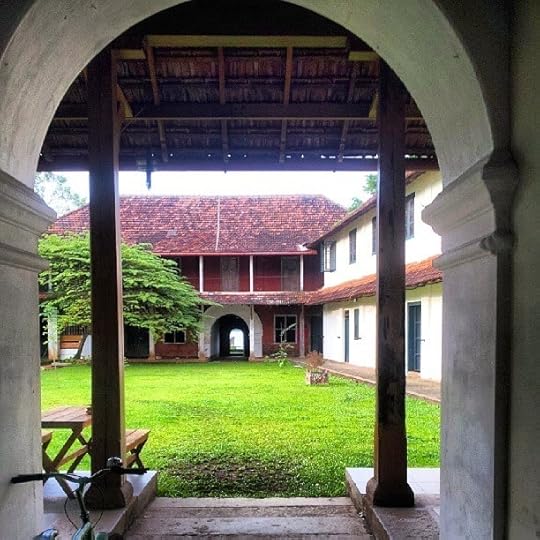
Further away from the bus stand and almost opposite the rather disappointing Greenix exhibition of Kerala arts, crafts, and traditions, there stands the Pepper House. Like the David Hall already described, Pepper house is both an eatery and a cultural centre. The café overlooks a peaceful and very beautiful grassy courtyard. We sampled a Bombay Sandwich which was essentially a cucumber sandwich with a spicy masala - surprisingly tasty. The café serves a fresh lime soda laced with ground sarsaparilla root (see below).

This curiously flavoured drink is both refreshing and enjoyable. The café is adjacent to a large room containing a magnificent library of books on art - mostly contemporary - and a huge collection of DVDs of western 'art' movies. This library is open to members of the public, who are free to browse and read the books. There are also facilities for watching the DVDs. The library belongs to, and was collected by, Bose Krishnamachari, the director of the Kochi-Muziris Biennale that is about to begin in December 2014.

The Fort House Hotel is close to Pepper House. Its small restaurant, which is one of the best that we visited in Fort Cochin, is housed under a huge traditional palmleaf canopy (see above).
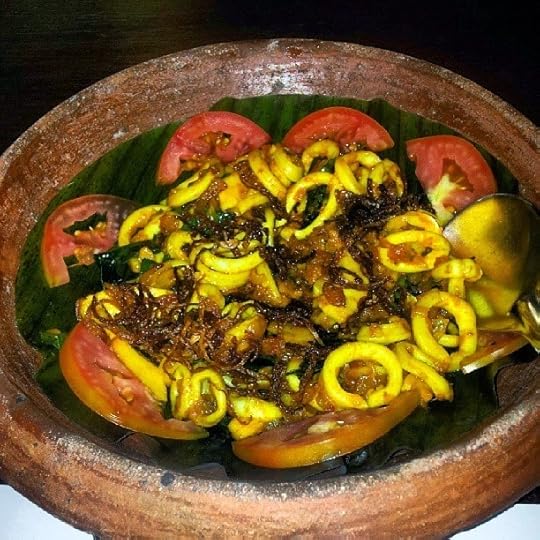
We ate at this restaurant twice , as we did at Old Harbour House which is only just a slightly better eatery. The squid olarithu (see above) was perfect as was grilled fish. Other seafood dishes that we tried were also good. This is a very pleasant place to eat.

One of our few visits to places outside Fort Cochin was to nearby Mattancherry. We entered a particularly unpretentious looking, rather shabby place opposite the bus stand and the entrance to the Dutch Palace. This was the Indian Hotel , where we ate beef biriani (see above). This typically Moslem preparation was one of the best birianis that I have ever tasted. Oddlly enough some of the other really good birianis that I have eaten were also made by Moslems in Kerala (in Calicut).
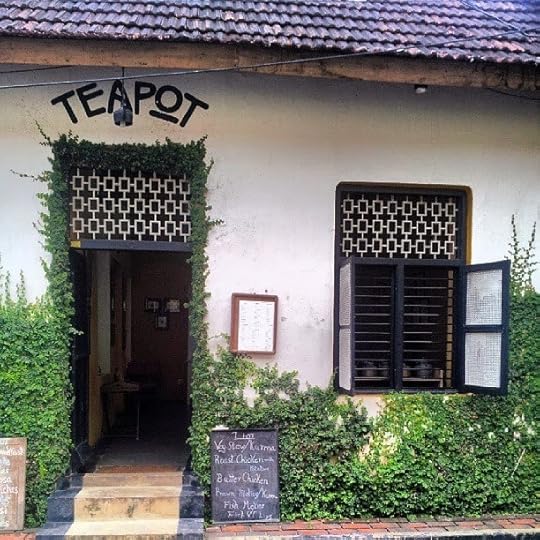
Returning to Fort Cochin, there are two cafés that deserve mentioning. One of these is Tea Pot. This is housed in an old Dutch (or Portuguese?) house that used to be the home of a family. The walls of this place are lined with shelves containing a large collection of teapots and kettles; they also hang from hooks above. The centrepiece of the place is a circular glass table supported by the upturnerd roots of a tree.
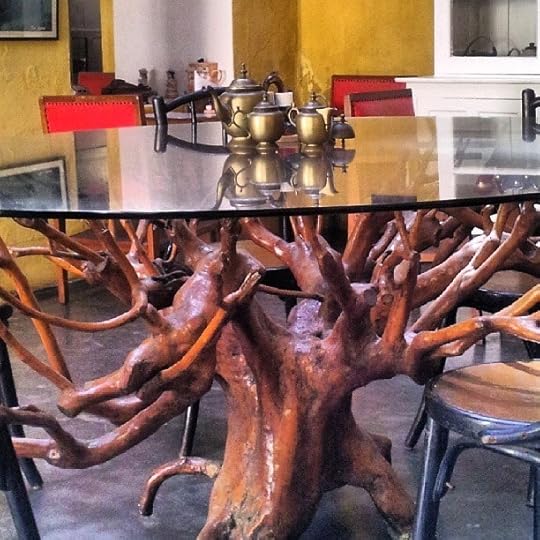
Drinks at Tea Pot are good as was the prawn kurma that I tried. I cannot say the same for what I saw and sampled of the sandwiches and other food offerings. Nevertheless, the Tea Pot is an extremely pleasant place in which to linger. Nearby in Burger Street, there is the lovely Kashi's. Filled with interesting works of contemporary art - mostly sculptural (see below) - and a good selection of art journals, this is a 'happening' place filled with visitors and locals.

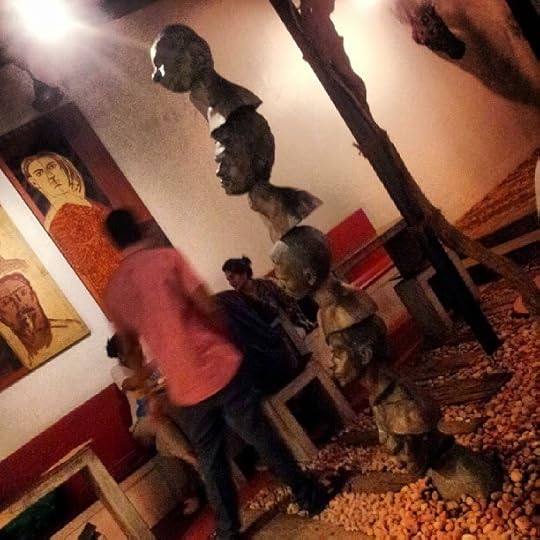
Although the food that we saw being served at Kashi's did not look particularly exciting, the cold coffees and ginger lime sodas that we drank there frequently were second to none. There are many other cafés in Kochin, but the 2 that I have described are by far the best.
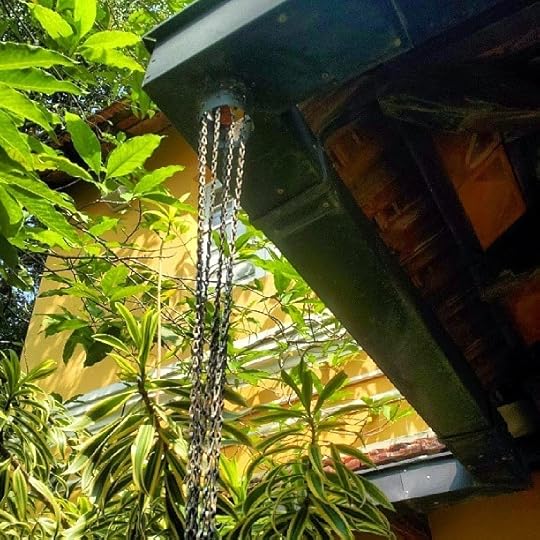
The Cafe du Mahe is the restaurant of the Tea Bungalow homestay (see detail above: this illustrates the type of rainwater conducting chains found in buildings all over Cochin)), and is excellent. It is a little way away from the centre of Fort Cochin, but worth visiting. We ate beside a swimming pool in the small garden surrounded on three sides by the hotel.

The grilled fish that we ate (see above) was exquisitely prepared. The vegetables accompanying the fish were cooked to perfection lightly flavoured with garlic and celery leaves in a European manner.
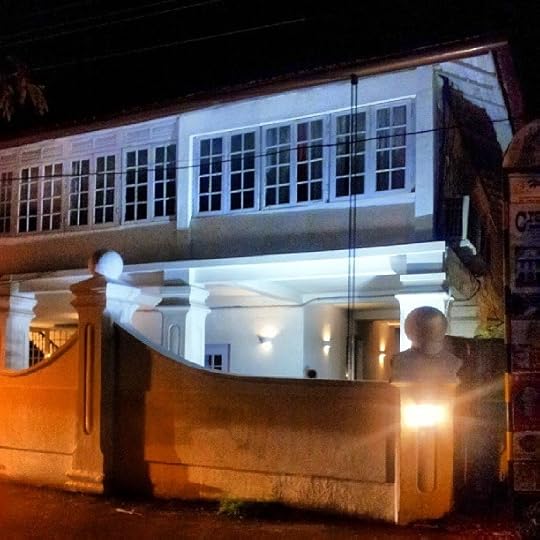
Back in the centre of Fort Cochin, close to the Chinese fishing nets and next to the Harbour House restaurant stands the Tower House hotel that is housed in a 17th century building. This establishment contains a restaurant that we tried to enter several times unsuccessfully. The rude watchman at the door put us off twice, and on another occasion it was closed because the cook was 'away'. I am glad that we persisted because when we did finally get to eat at the restaurant, the food was above average. We ate a light lunch consisting of an authentic tasting gazpacho, deep fried squids that were perfect, and a curious cheese croquette. This consisted of cheese sandwiches that had been coated with breadcrumbs and then deep fried; it was delicious.
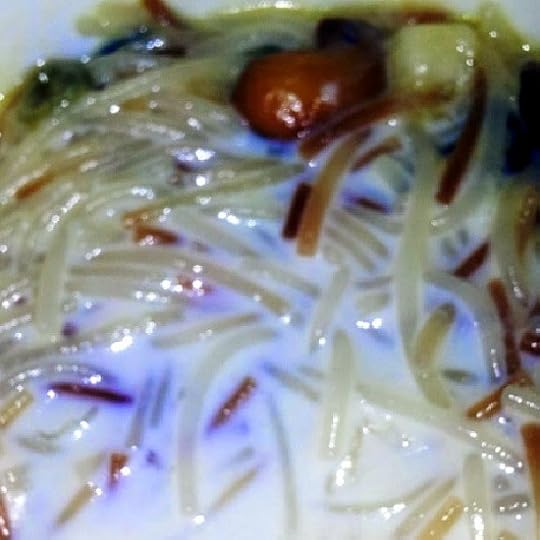
The Bright Heritage Hotel on Tower Road, where we stayed, also had a good restaurant, which serves non-residents as well as hotel guests. This is open to the outside under a canopy on the top of the hotel. Everything was made from scratch when it was ordered. A team of 4 young cooks chopped, ground, stirred, and fried, once the order for a dish was given. The results were tasty. We particularly enjoyed a prawn and raw mango curry. The payasam (see above) served as a dessert made a great finale for the good meals that we ate there.
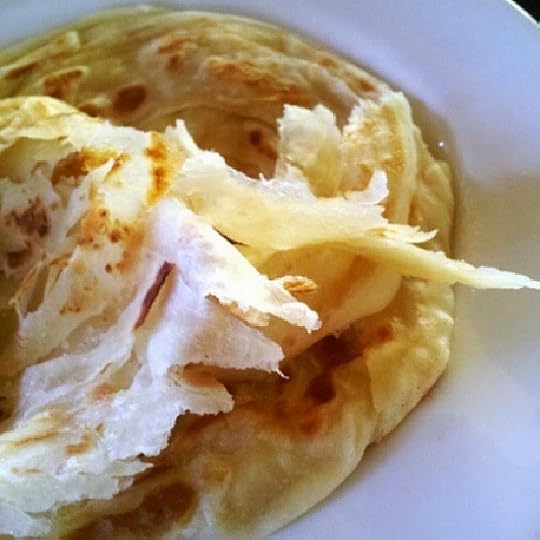
During our only visit to Ernakulam, the modern city of Cochin across the lagoon from Fort Cochin, we were taken to have lunch at the beautifully restored old Grand Hotel on MG Road. It has a large dining room, which was filled with locals enjoying the excellent food served there. We enjoyed several Keralan dishes - both seafood (see below) and meat - served with flaky Kerala parathas (see above).
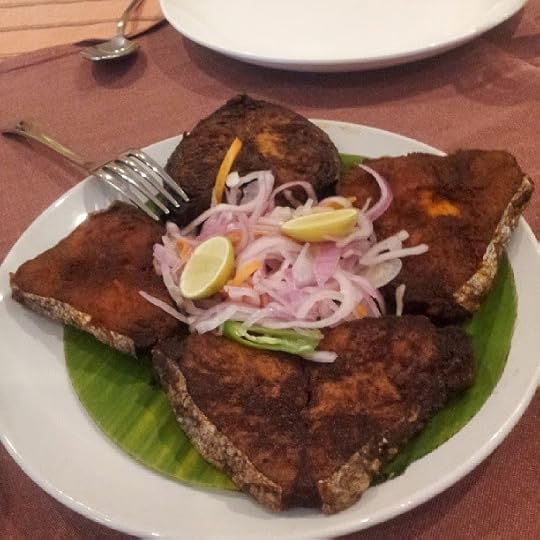
In summary, Fort Cochin is not only a delightfully picturesque place to visit but also a wonderful place for gourmets. Both local dishes and European dishes of a high quality are available at reasonable prices in pleasant surroundings.
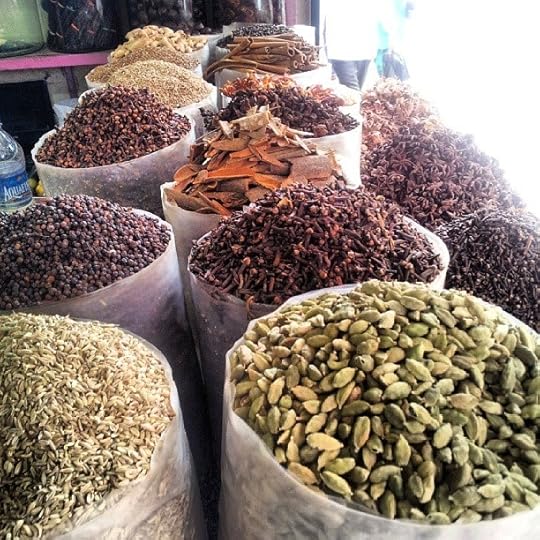
Spice shop run by Gujuratis in Ernakulam
READ MORE OF
ADAM YAMEY's WRITING
BY CLICKING
HERE
Published on November 16, 2014 04:12
November 9, 2014
BEEF IN BENGALURU (Bangalore)
BEEF IN BANGALORE (BENGALURU)

When I tell my friends and others in the UK that one of the very best places to eat beef is in the land of the 'Sacred Cow' - India - they raise their eyebrows in surprise. I assure them that I am not pulling their legs.
Just before ending my very first visit to Bangalore in early 1994, my wife suggested that we ate a good biryani at a place which she considered to be good at making this kind of dish. We headed for Shezan's, which was located in an old-fashioned bungalow in Lavelle Road. The bungalow no longer exists, but the restaurant does, having relocated to another place in the same road. I looked at the menu and noticed that a large chateaubriand steak with trimmings was available for about 2 pounds (GB). I said that I would have that as the same thing would cost many times that in the UK, and that getting good biryanis was not difficult in London. The steak was outstandingly good. This was my introduction to eating beef in Bangalore.
We have visited Shezan's may times since, and always enjoy eating there. Some years after my 'discovery' of Shezan's, which also calls itseft 'The Other Place', I was taken to Only Place ('OP'). This restaurant was originally started by Haroon in a location on Brigade Road. Later, it shifted to Museum Road. Haroon and his son Shoaib served some of the best beef steaks that I have ever eaten.
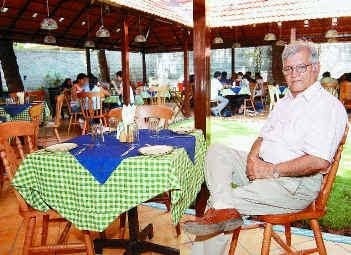
The late Haroon of OP
Haroon died about 2 years ago. Shoaib and one of his relatives inherited the restaurant in Museum Road, and ran it as a partnership. About a year ago, Shoaib and his partner chose to split up. Shoaib left Museum Road, and his former partner continued to run it. We visited the restaurant once or twice after Shoiab had left it, but were not nearly as satisfied with it as when Shoaib had been involved.
After some time, Shoaib opened his OP at a new location: 311, 6th Main, 2nd Stage, Off 80 Feet Road, Indiranagar . This place in Indiranagar is in no way related to, or connected with, the OP in Museum Road. Shoaib's OP in Indiranagar is yet another reincarnation of the place that Haroon first created many decades ago in Brigade Road. The quality of the food and service at the 'true' OP in Indiranagar has not suffered in the slightest from the shift from Museum Road to Indiranagar. Shoaib's OP still serves some of the world's best beefsteak. You will spurn Aberdeen Angus, Charolais or Wagyu beef after eating what Shoaib and his team prepare with beef bred in Karnataka! Shoaib's beef is so good that major embassies in New Delhi order it from him.

The Indiranagar OP, which should really be regarded as the ONE and ONLY 'Only Place' is located in a tree-lined street opposite an open space belonging to Defence Colony Cricket Ground. Some of its tables are outside in the shade of the leafy branches of huge trees. Other tables are indoors in a simply decorated dining room. Apart from being a place to enjoy superb beef as well as seafood (try the king fish [seer fish] steaks and the jumbo prawns), this is a pleasant place to linger and to escape from the hustle and bustle of Bangalore. Whatever you choose from Shoaib's extensive menu that contains mostly European (rather than Indian) dishes, you should leave space for a portion of Shoaib's deliciously fruity apple pie. Shoaib's OP is not only renowned for its deservedly highly praised beef, but also for the aforementioned apple pie. So, even if you are a vegetarian, there is at least one reason for you to visit Shoaib's OP in Indiranagar. I have never tried the vegetarian dishes at OP as I am a true carnivore!

Finally, please do not confuse Shoaib's 'original' OP in Indiranagar with that establishment that is now running in Museum Road. The latter will disappoint you; the former - in Indiranagar - will delight you.
To read more by Adam Yamey,
click HERE
Published on November 09, 2014 03:35



